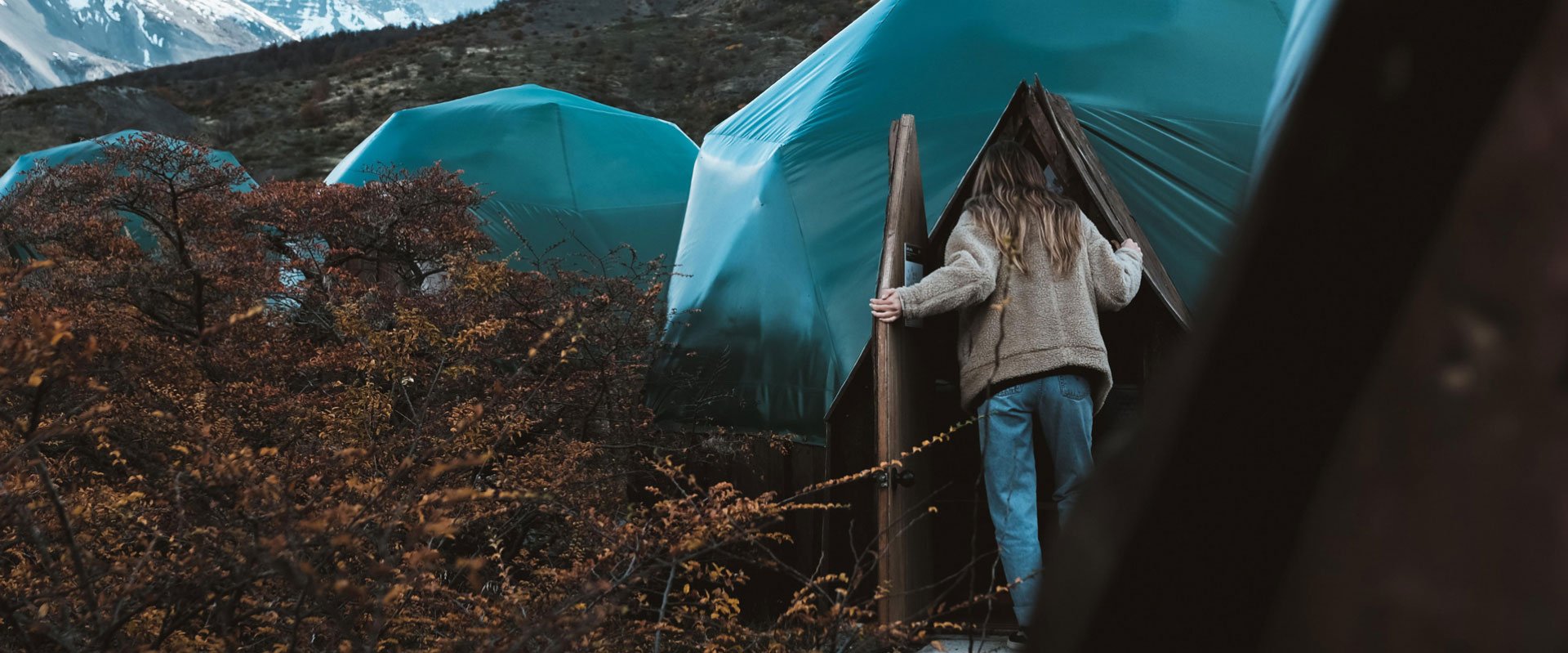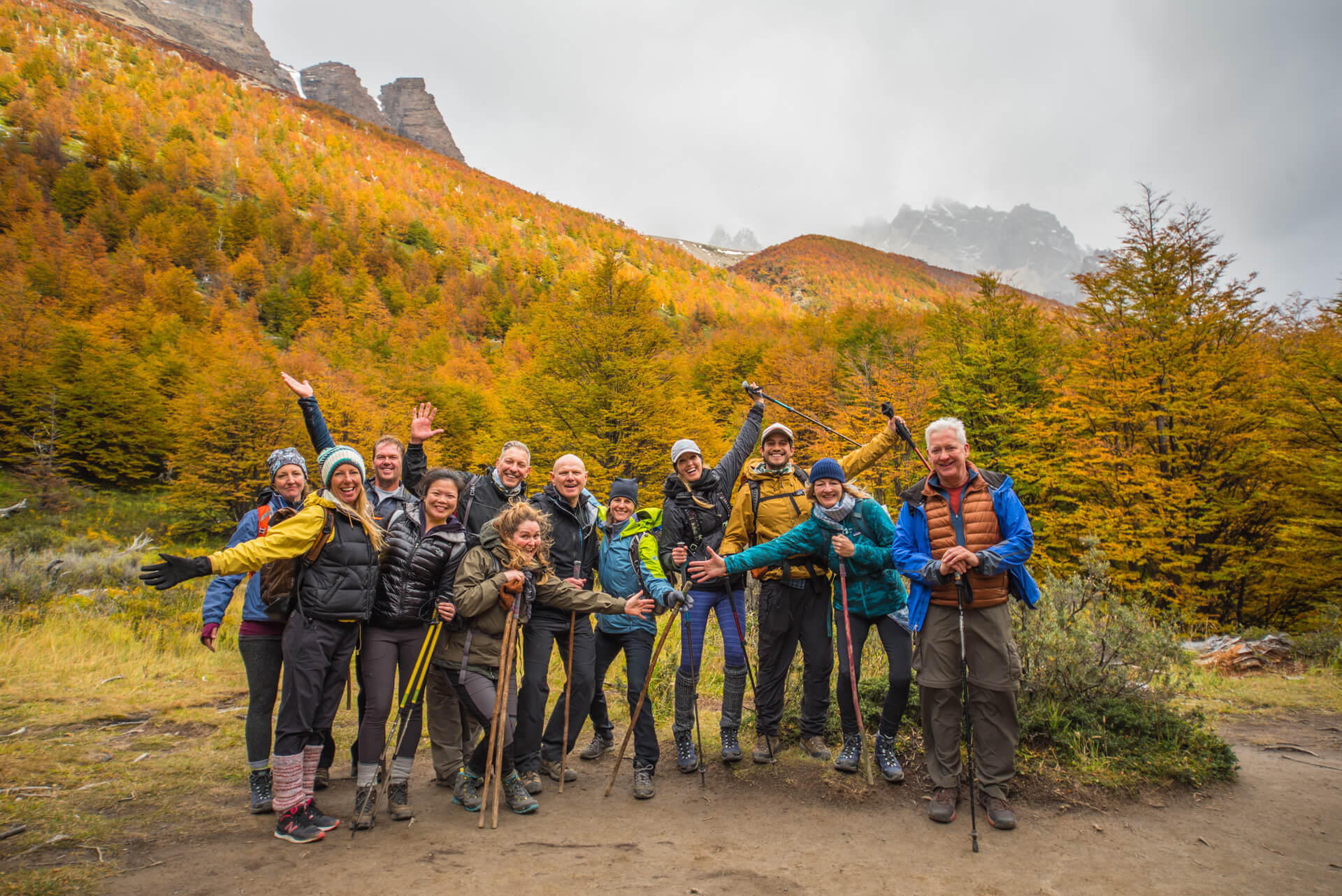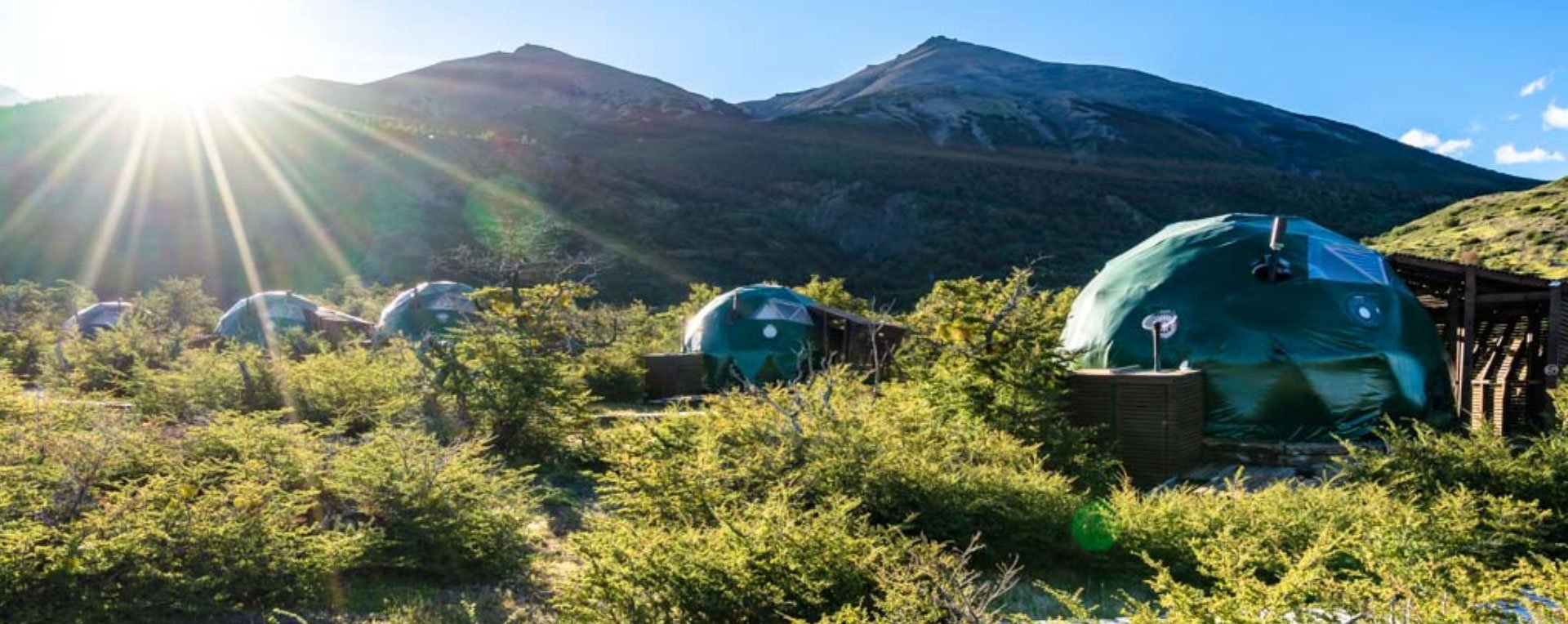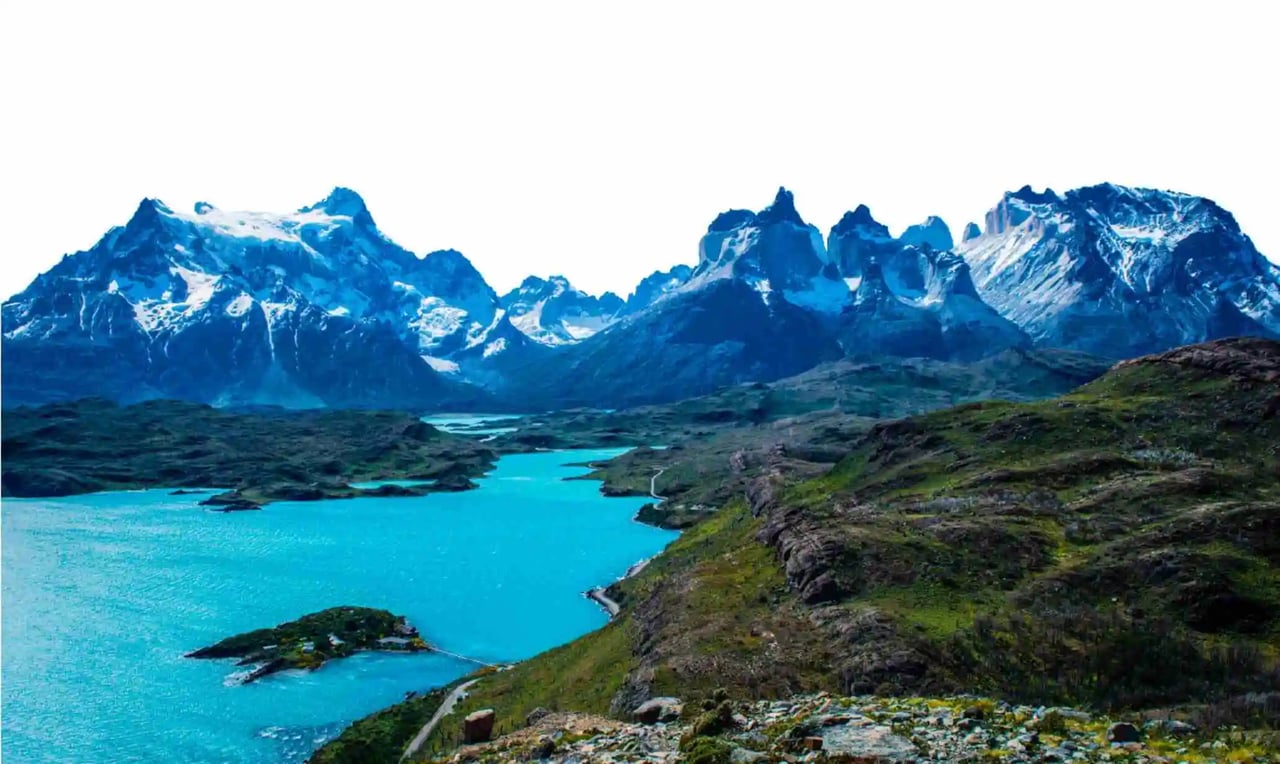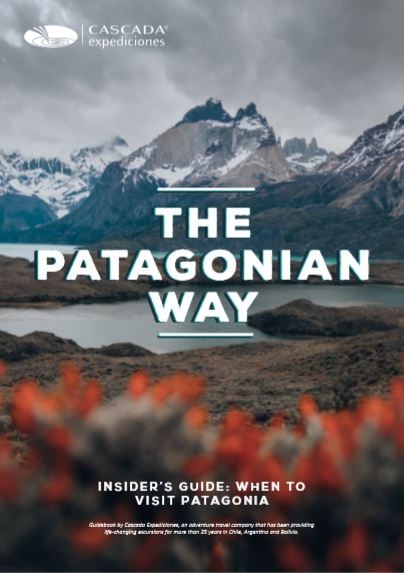Torres del Paine National was created on May, 13th 1959.
The park became internationally famous for its three granite spires that gave its name. More and more travelers started visiting the area, most of them to hike through the trails while doing the W Trek or the Torres del Paine Circuit (“O Trek”). But far beyond the epicness of the hikes you can do here, Torres del Paine is amongst the most unique places on Earth to spot wildlife.
This area of 227,298 hectares became a UNESCO World Heritage Site in 1978, to highlight and protect its fauna and flora. Most wildlife movies about Patagonia were shot in this park. And almost all pictures of pumas of South America you’ll find on the internet were shot here.
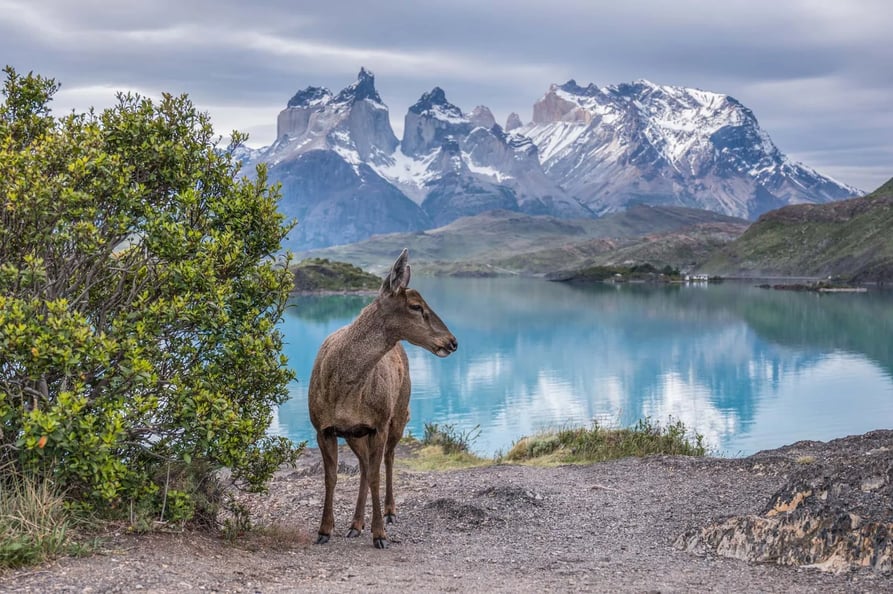
And it’s not just a matter of wildlife. Here, you’ll find 578 species of flowers - 493 are native. This region is known for its high endemism, and it’s also due to its variety of climates and weathers. While you’ll get lots of precipitations around the southern Patagonian ice fields (western area), the plains near the Torres del Paine mountain range are surprisingly dry, which creates a contrast that can be seen through wildlife.
And if you're not convinced Torres del Paine is heaven for animal lovers yet, here’s a complete guide.
TABLE OF CONTENTS
1. What makes Torres del Paine a hotspot for wildlife?
2. What animals can I see in Torres del Paine?
3. When is the best time to spot wildlife in Torres del Paine?
4. Is wildlife dangerous in Torres del Paine?
5. What tours are recommended to spot wildlife in Torres del Paine?
1. What makes Torres del Paine a hotspot for wildlife?
Patagonia is a vast (1.043 million square kilometers) and remote region that encompasses a great variety of landscapes. In the southernmost region on the planet that is divided between Chile and Argentina, you’ll find high mountains, huge forests, giant plains and the third largest reserve of freshwater on Earth, the southern Patagonian ice fields.
Torres del Paine is like a condensed version of Patagonia.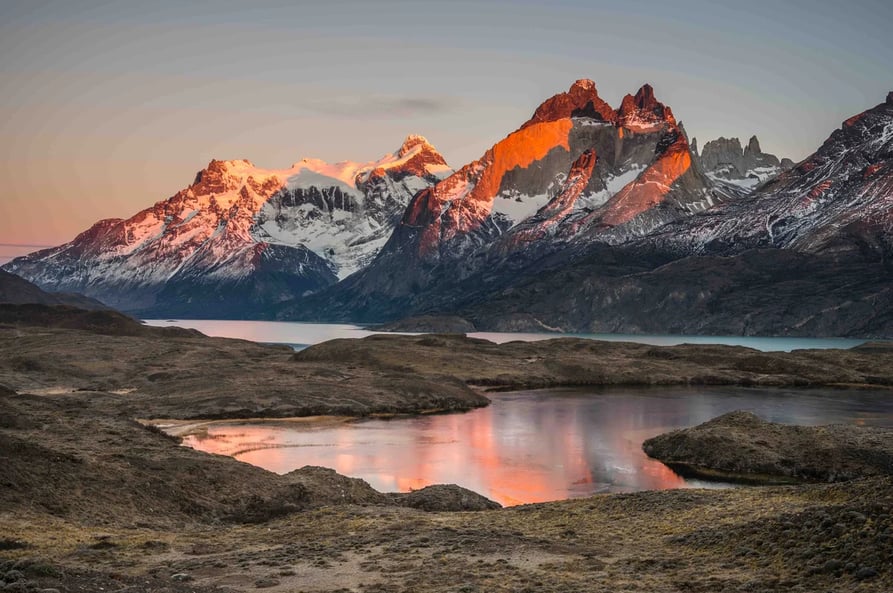
Here, you’ll find 4 biotic zones that make up the territory of the park, determined by the vegetation (a study was carried by Pisano in 1974). The pre-andean shrubland occupies most of the surface of the park, present in both plains and plateaus. Here you’ll find animals like armadillos, grey foxes and guanacos that also live in the Patagonian steppe, that is characterized by the presence of plant cushions, prostate shrubs and grasslands. In the Andean desert, the vegetation is devoid of tall trees and shrubs. Here, it’s harder to find any kind of wildlife due to the harsh weather conditions associated with altitude. The last biotic zone is the Magellanic forest. In these dense forests, you’ll find lots of birds and the endangered South Andean deer - though it is very hard to spot.
Most wildlife photographers focus on the pre-andean shrubland and the Patagonian steppe, though you can find wildlife about anywhere in the park. But these two biotic zones concentrate the biggest quantity of mammals, including pumas and guanacos.
118 bird species, 25 mammal species, 6 reptile species, 3 amphibian species and 6 fish species can be encountered in Torres del Paine. And while it may not sound like a huge number compared to places like the Amazon rainforest, you’ll find an incredible density of native animals like condors, guanacos and pumas - if not the highest density of pumas on planet Earth.
2. What animals can I see in Torres del Paine?
Some travelers aim to see Patagonia’s “Big Five”, namely the Andean condor, the guanaco, the puma, the huemul and Darwin's rhea. But here's good advice; do not focus on one animal in particular. Even if you opt for a Puma Tracking, you should always pay attention to birds and mammals. When it comes to wildlife in Torres del Paine, there’s always a surprise around the corner. Check out our video featuring camera traps in Torres del Paine to see how much incredible wildlife there's in the area.
Here’s a non-exhaustive list of some of the most fascinating animals in Torres del Paine.
Mammals of Torres del Paine
GUANACO (Lama guanicoe)
When can I see them? Year round
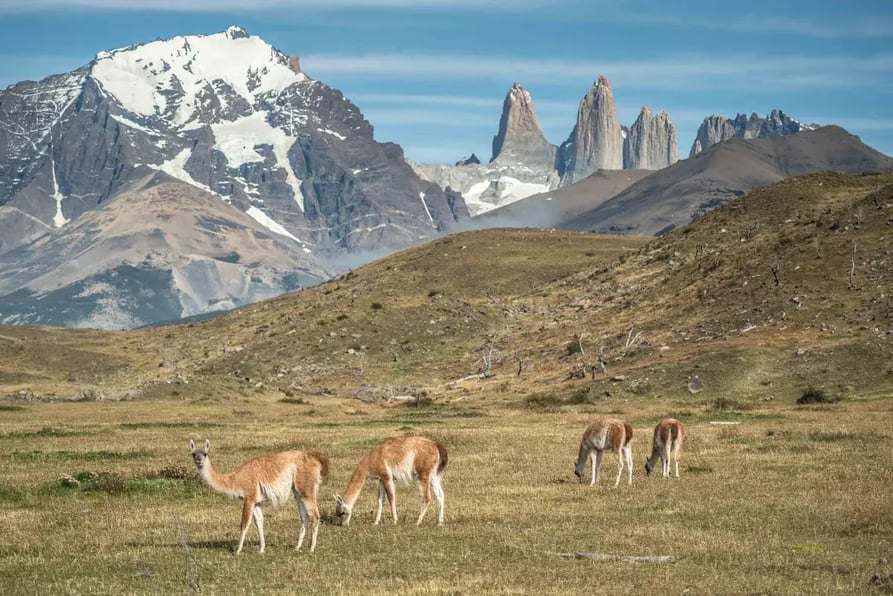
One of Patagonia’s most widely spread animals, the guanaco is a camelid native to South America. In Torres del Paine, they live in big herds you can commonly see in the plains of the east and center of the park (from Laguna Azul to Pehoe Lake). Baby guanacos are called “chulengos”. Guanacos are curious animals that spend most of the day grazing and live in herds composed of females, their young and a dominant male. They weigh up to 140 kilos (310 lb) and are therefore considered one of the largest terrestrial animals in South America.
PUMA (Puma concolor)
When can I see them? Year round
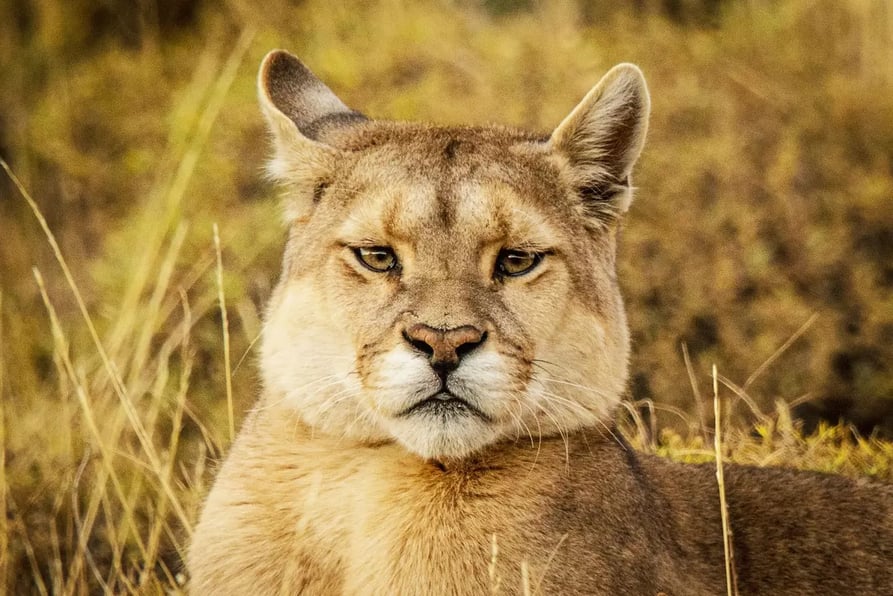
The puma is a large cat native to the Americas that lives from Alaska to Patagonia, making it the most widespread of any large terrestrial mammal in the Western Hemisphere. This ambush predator particularly enjoys eating guanacos, though it also hunts animals like hares and Darwin’s rheas. Males can weigh up to 100 kilos (220 lb). Torres del Paine is definitely the best place in Patagonia to spot pumas, as they live in open areas with plenty of food and a protected habitat. They live about everywhere, including the nothofagus forests, but it is easier to see them in the steppe (for instance, around Laguna Amarga and Laguna Azul).
Other wild cats in the area include the Geoffrey’s cat and the Colocolo cat, both of them small and very hard to spot.
CULPEO FOX (Lycalopex culpaeus)
When can I see them? Year round
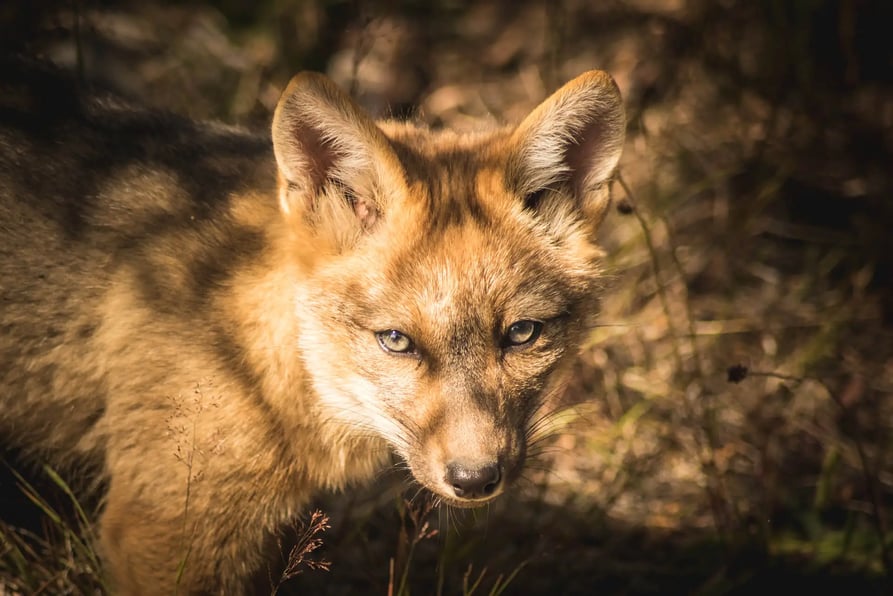
The second largest native canid on the American continent after the maned wolf (max weight : 13,5 kilos / 30 lb), the Culpeo Fox is similar in appearance to a red fox and enjoys eating rabbits, birds, lizards and rodents. You will mainly find it around the broadlees Nothofagus temperate forests (it is common to see it around EcoCamp) though it lives in a wide variety of habitats, including deserts and high plateaus.
SOUTH AMERICAN GRAY FOX (Lycalopex griseus)
When can I see them? Year round
-min%20(4).webp?width=893&name=Zorro%20Chilla%20BAJA%20(3%20of%201)-min%20(4).webp)
The South American Gray fox is also called “Chilla'' and “Patagonian fox” and is typically seen in Torres del Paine’s plains and grasslands. It is smaller than the Culpeo fox, with a maximum weight of 5,45 kilos / 12 lb. Its main prey items are mammals, especially rodents.
SOUTH ANDEAN DEER (Hippocamelus bisulcus)
When can I see them? Year round
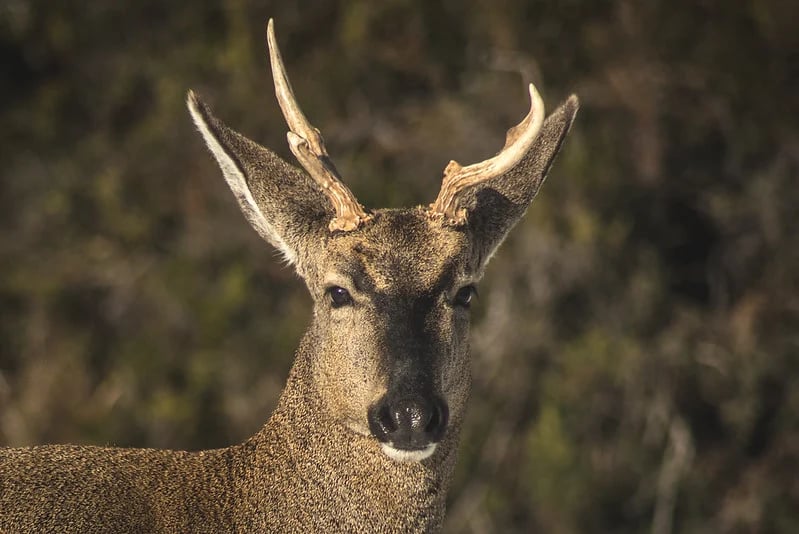
The southernmost deer in the world, the South Andean Deer – also known as “Huemul” – is an endangered deer that can be found in some forests of Chile (75%) and Argentina (25%). Uncontrolled hunting brought this beautiful deer to the brink of extinction and today, it is estimated that about two thousand deer remain in the wild. This great deer can weigh up to 100 kilos (220 lbs) and feeds on leaves, tender shoots and sometimes grass. In Torres del Paine, you might see this legendary deer in the forests near Grey glacier or on your way to the towers’ base viewpoint.
HUMBOLDT’S HOG-NOSED SKUNK (Conepatus humboldtii)
When can I see them? Year round
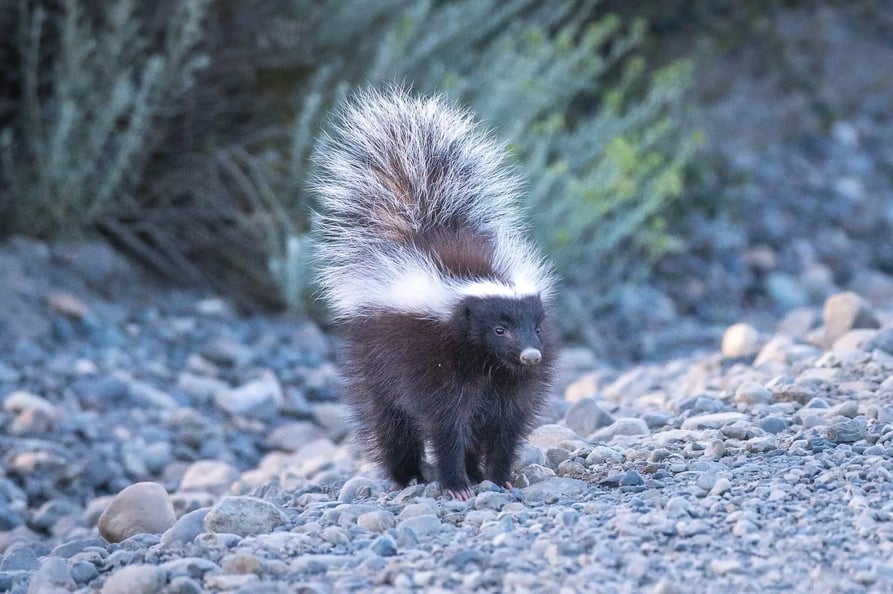
This cute hog-nosed skunk is indigenous to the open grassy areas of Patagonia. They use their long claws to locate prey, mainly insects but also rodents and carrion during winter. They are active at dawn and twilight and are a prey for bigger mammals such as foxes and puma. In Torres del Paine, they are often seen in the steppe near Laguna Azul and Laguna Amarga.
DWARF ARMADILLO (Zaedyus pichiy)
When can I see them? September to April
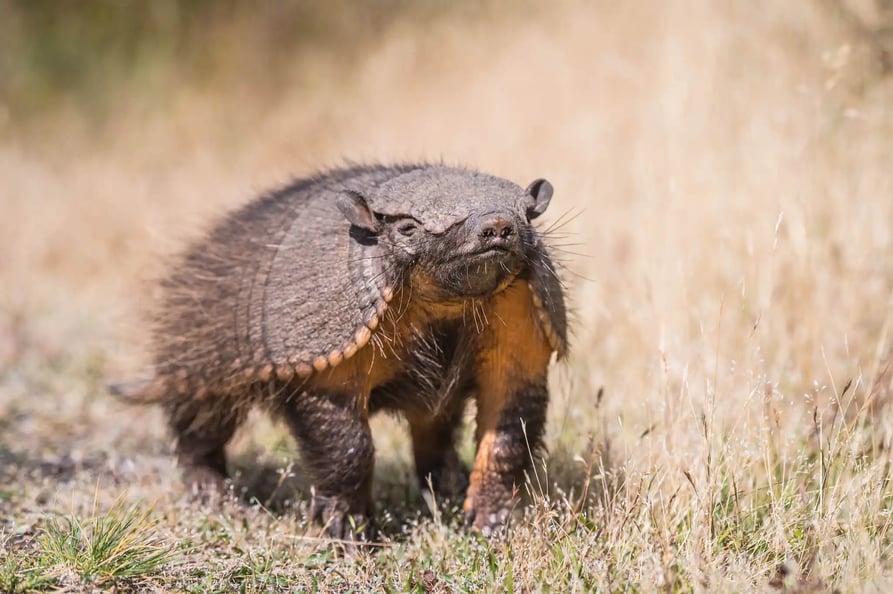
The only armadillo to hibernate, the Dwarf Armadillo – also called “Pichi” – is a solitary animal that lives in Patagonia’s arid and semiarid grasslands. Pichis are omnivorous with a special taste for invertebrates like beetles, scorpions and ants. They are considered near-threatened as they are hunted in some places, both for sport (the skin is used is some handicrafts) and subsistence. They are commonly seen in the eastern side of the park.
Birds of Torres del Paine
ANDEAN CONDOR (Vultur gryphus)
When can I see them? Year round
(1).webp?width=893&name=25224952158_ee718179b1_k%20(1)(1).webp)
Torres del Paine has one of the highest densities of condors in the region and this is something you can tell just by driving through the national park. It is often seen flying in circles above carcasses.
This New World Vulture is the largest flying bird on Earth by combined measurement of weight and wingspan (a max. wingspan of 3.3 meters / 10.10 ft). This huge scavenger feeds on carrion and likes to nest at high elevations (up to 5000 meters/16,000 ft). It can live up to 70 years, which makes it the world’s longest living bird. This famous bird is featured on the coat of arms of several countries, including Chile, Bolivia and Colombia.
DARWIN’S RHEA (Rhea pennata)
When can I see them? Year round
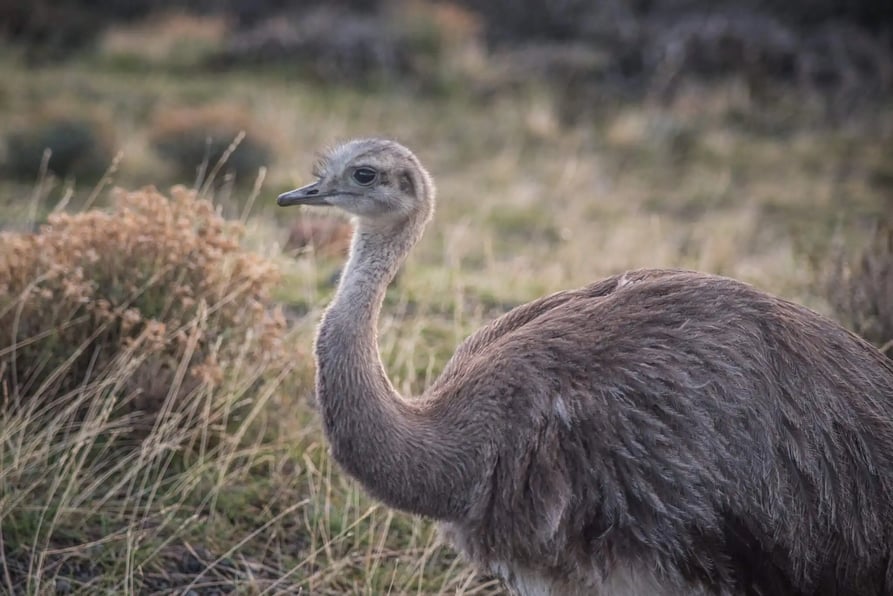
The Darwin’s rhea – also known as lesser rhea and ñandu – is a large flightless bird that is commonly seen in Patagonia’s grasslands. Their feathers resemble those of ostriches. They are mainly herbivores, even though they sometimes eat small animals like grasshoppers, lizards and beetles.
SOUTHERN CARA CARA (Caracara plancus)
When can I see them? Year round
.webp?width=893&name=Cara%20Cara(1).webp)
The southern Caracara is a bird of prey with a total length of up to 65 centimeters (26 in) - the biggest amongst the crested caracaras, a species that has been reported from Canada to Patagonia (though it is uncommon in North America). This opportunistic raptor is often seen walking around on the ground looking for food, especially in Patagonia’s plains.
CHILEAN FLAMINGO (Phoenicopterus chilensis)
When can I see them? Year round
.webp?width=893&name=Flamingos(1).webp)
Who said flamingos only inhabit warm places? This large flamingo (up to 130cm/51in) can be found in Patagonia’s salt lakes, lagoons, estuaries and fjords. Compared to other similar flamingos like the American flamingo, they have a larger amount of black on the bill. In Torres del Paine, you may encounter it in the lagoons of the easter and central areas of the park - for instance around Laguna Azul and Laguna Amarga.
MAGELLANIC WOODPECKER (Campephilus woodpecker)
When can I see them? Year round
.webp?width=893&name=Carpintero%20Magallanico(1).webp)
This very large woodpecker (up to 45 cm/18 in in length) inhabits the nothofagus forests of Patagonia where they feed on insects like beetles, spiders and wood-boring grubs. The male is easily recognizable with its elegant red head, while the female has a thin red layer near its beak.
CHILEAN FLICKR (Colaptes pitius)
When can I see them? Year round
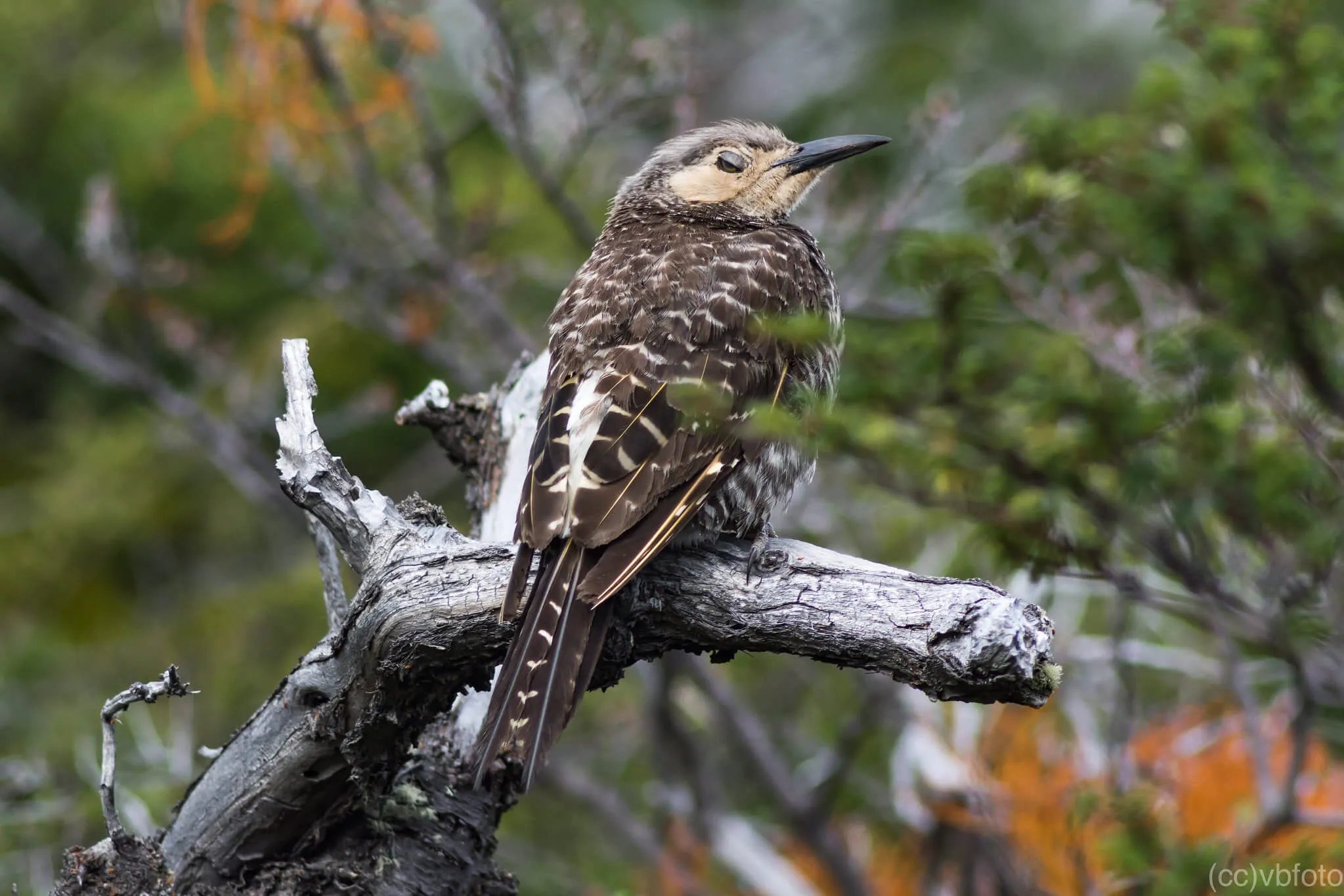 Shot by Vicente Barahona
Shot by Vicente Barahona
The name of this nice bird comes from the indigenous Mapuche word “Pütiw” that imitates the way it sings. It can be found in both Chile and Argentina, from the coastline to the mountain (up to 2000 meters above sea level). It is common to see it around EcoCamp, as it enjoys the forests of Torres del Paine
LESSER HORNED OWL (Buho magellanicus)
When can I see them? Year round
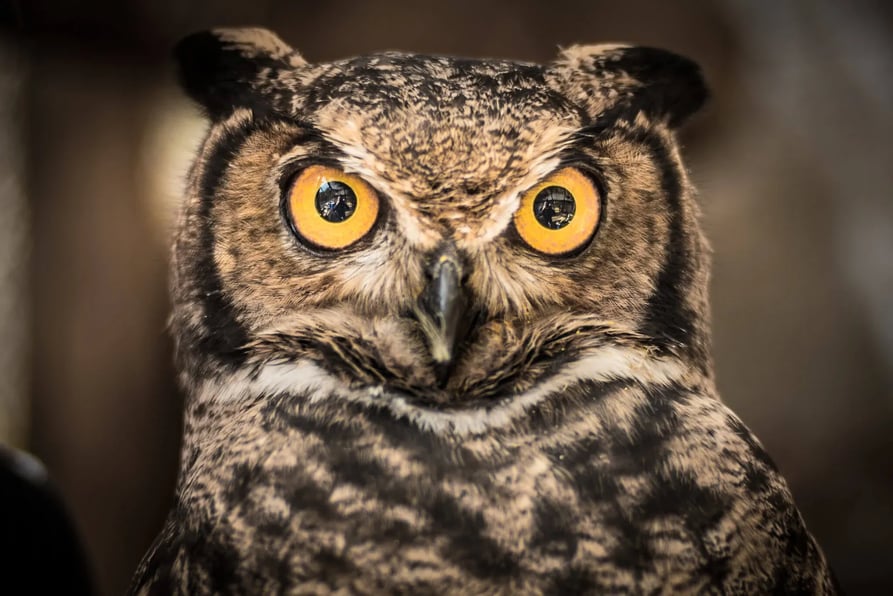
The lesser horned owl - locally known as Tucuquere, imitative of its common sound - is about 45 cm (18 in) long and is the largest owl you’ll find in Patagonia. It is recognizable with its broad wings and large head with two “ear” tufts. It lives from Perú to southern Patagonia (Tierra del Fuego) and you may see it at night on a hike through the nothofagus forests of Torres del Paine. It also lives in scrubland and grasslands and rodents make up most of their diet, though it also eats birds, reptiles and insects.
AUSTRAL PYGMY OWL (Glaucidium nana)
When can I see them? Year round
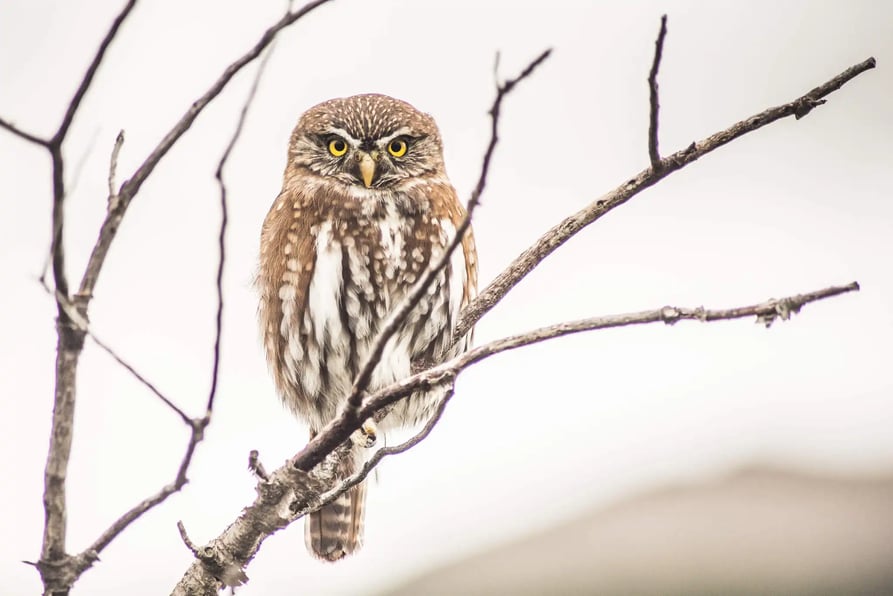
The smallest owl in Patagonia (21cm/0.6ft), the austral pygmy owl – locally known as “chuncho” – inhabits the temperate forests of Patagonia where it feeds on mice and insects, but also on small birds and reptiles. Its small size and silent flight make it hard to spot, though it can be seen during the day.
BLACK-CHESTED BUZZARD-EAGLE (Geranoaetus melanoneucus)
When can I see them? Year round
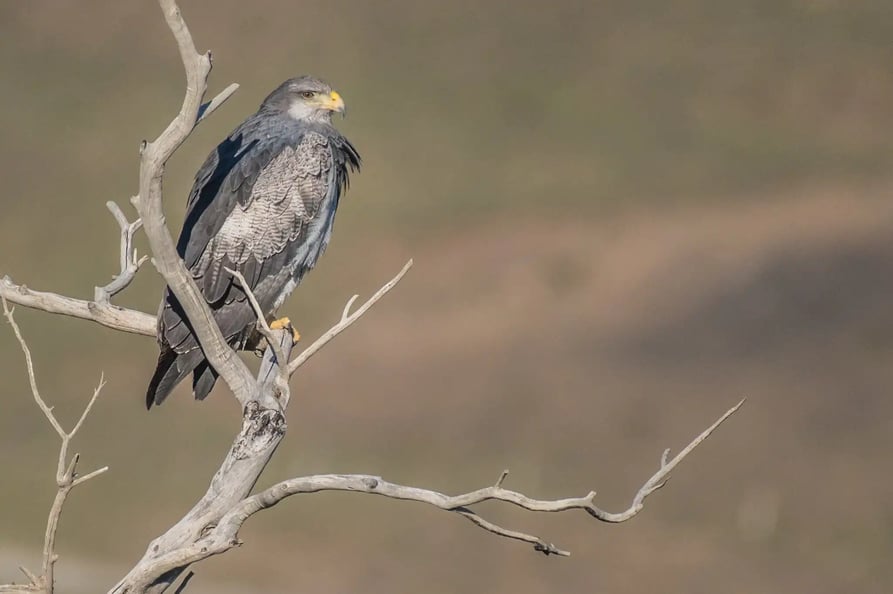
The black-chested buzzard eagle is a beautiful bird of prey of the hawk and eagle family that inhabits open regions of South America. You can see it about anywhere in Torres del Paine, as it looks for prey. This large buzzard (up to 76 cm/30 in) particularly enjoys mid-sized mammals, such as the introduced hare that can be seen in Torres del Paine.
TORRENT DUCK (Merganetta armata)
When can I see them? Year round
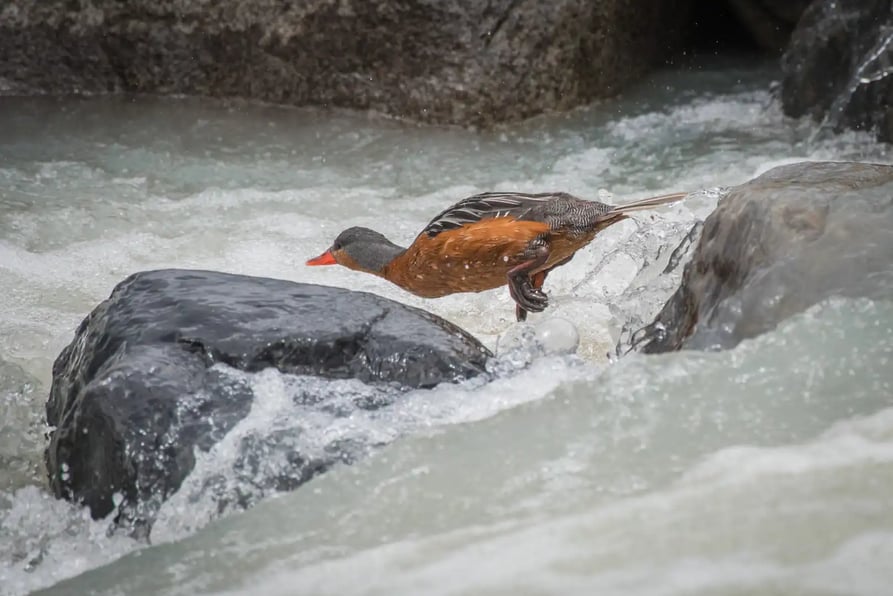
The torrent duck enjoys the fast flowing mountain rivers (you’ll find plenty of them in Torres del Paine!). This powerful swimmer and diver nests in small waterside caves and other sheltered spots. While the population of this awesome species is stable in Torres del Paine, its population is declining globally, due to the competition for its invertebrate food from pollution, deforestation, damming of mountain rivers and the introduced trout. It can measure up to 46cm/18in and it is a resident breeder in the Andes of South America, so you might encounter it as north as Colombia.
BUFF-NECKED IBIS (Theristicus caudatus)
When can I see them? October to April
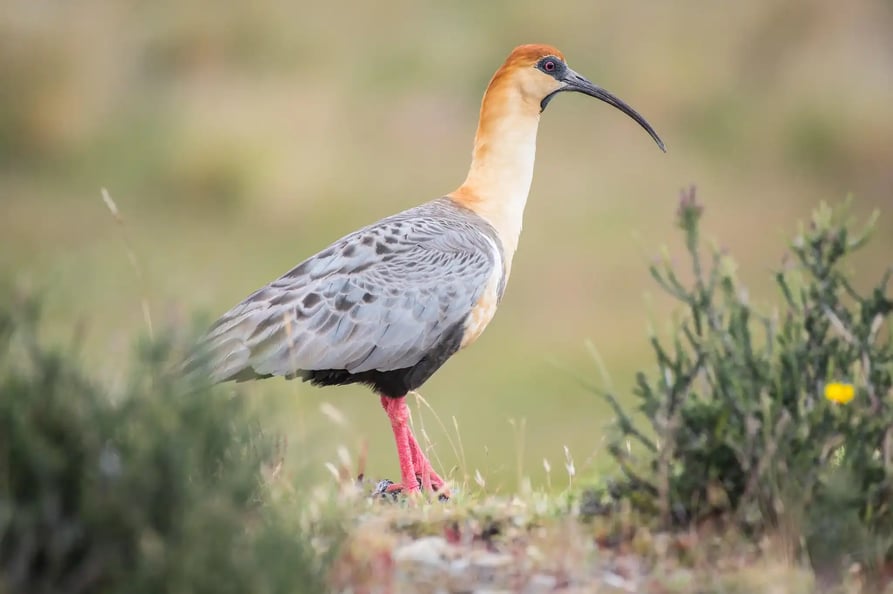
Also known as the white-throated ibis, the buff-necked ibis (locally known as “Bandurria”) is a fairly large (up to 73 cm / 28 in) ibis found in the open areas of Torres del Paine. It can actually be found up to Northern America, and while it does not migrate, it moves a lot at a local scale. It enjoys eating invertebrates such as grasshoppers, crickets, worms, spiders and scorpions.
3. When is the best time to spot wildlife in Torres del Paine?
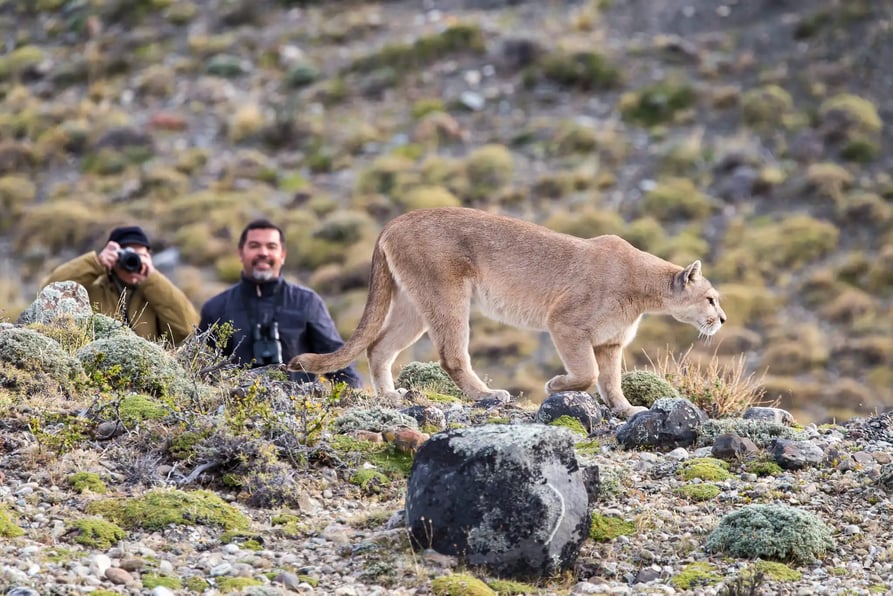
There is no perfect answer to that question. Whenever you come, you may get four seasons in a day. As for wildlife, there are trends. For instance, it is a bit more difficult to spot pumas in high season (November to March), as the roads and trails are more crowded. The guanacos’ breeding season occurs once a year in December and January. Winter months (may to september) are good months to spot mammals, but days are shorter and temperatures are lower. For all of these reasons, we mentioned the possible dates to spot wildlife near the species’ name.
As for the best time to travel to Patagonia (regarding the weather), check out our video for all the information!
4. Is wildlife dangerous in Torres del Paine?
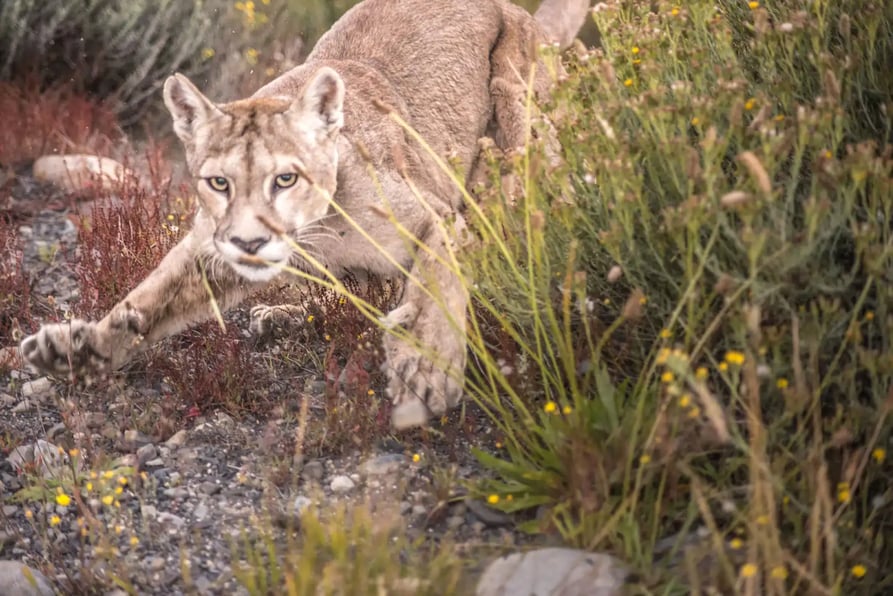
Remember this : “Do not fear the animal : respect it”. The only big predator in the park is the puma, which has enough food and space to leave peacefully near humans. That said, travelers should always take safety precautions when it comes to wildlife spotting. Always maintain a good distance from the animals. Puma attacks on humans are extremely rare in Patagonia, and we are convinced that whenever you respect the animal, nothing bad will ever happen to you.
If you aim to spot pumas, we can only recommend going on a tour with a professional puma tracker. But whichever wildlife you are aiming to, don’t worry! There are no venomous animals in Torres del Paine. And we hope there are only responsible travelers.
5. What tours are recommended to spot wildlife in Torres del Paine?
If you want a good mix between hiking and wildlife, you should opt for a Wildlife Safari in Torres del Paine National Park, that can be coupled with a full day puma encounter to look for the famous puma. You can also spend 6 days looking for Patagonia’s elusive predator - and other awesome animals and landscapes - on a Puma Tracking.
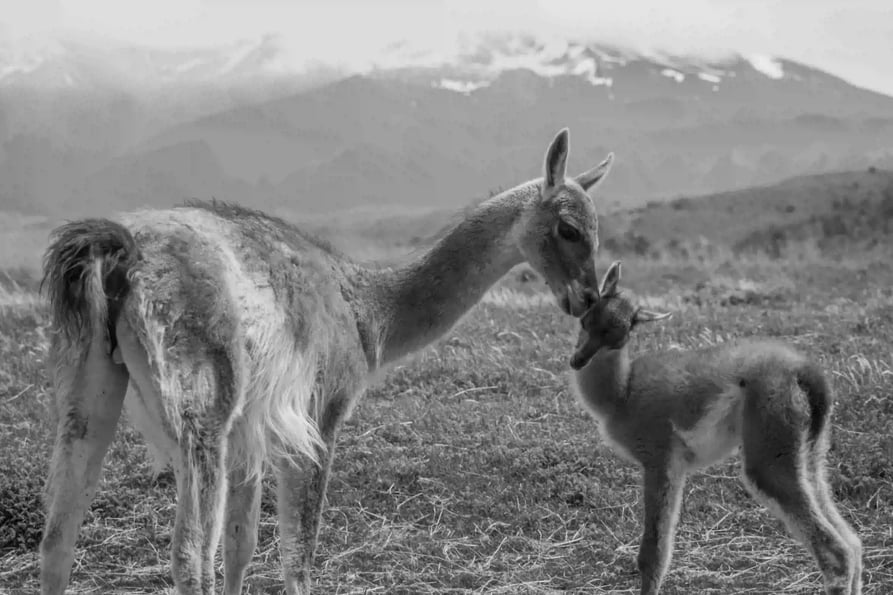
And if you want to organize your own tailor-made wildlife adventure in Torres del Paine, contact us!

